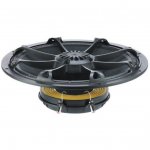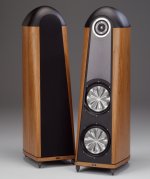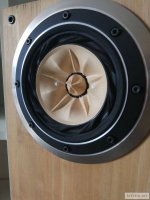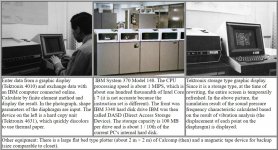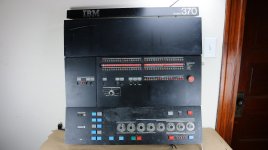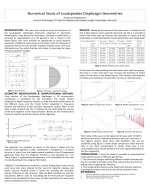Is it an hydroformed diaphragm ?
It seems be extremely rigid and thin in order to offer some deformation, The structure may be affected by the metal fatigue ?
I think it's made using prevailing production techniques, hydroforming seems obvious. Nevertheless, it'll be difficult and expensive.
Titanium's strength-to-density ratio is unrivalled, this is probably the primary reason for using it.
Last edited:
I meant Titanium(alloy)'s tensile strength to density ratio, fatigue- and crack resistance, for the sake of completeness.
A few design considerations with regards to the diaphragm:
Hoop stiffness is inversely proportional to size > Double the size = half the stiffness.
A Bi-conical increased area with same voice coil size reduces this effect.
Hoop stiffness is inversely proportional to size > Double the size = half the stiffness.
A Bi-conical increased area with same voice coil size reduces this effect.
Last edited:
I meant Titanium(alloy)'s tensile strength to density ratio, fatigue- and crack resistance, for the sake of completeness.
It should not be a pure titanium diaphragm, probably an alloy no ?
According to Celestion it's made from an ultra thin sheet of Titanium.
I am no expert in this field, but I know 30μm Titanium is used in dentistry for its high bending strength.
Titanium foil is usually >99.5% purity.
I am no expert in this field, but I know 30μm Titanium is used in dentistry for its high bending strength.
Titanium foil is usually >99.5% purity.
Last edited:
Here's some additional info.
The example presented in the documents seems to be a very specific Alpha Beta Alloy.
The base sheet for the Axi2050's diaphragm is probably even more specific.
If you do some research you'll find a large variety of foils are available.
The grain size and structure have a major impact on work hardenability (n-value) as well as stretchability.
These are related to thickness.
If you do some research you'll find a large variety of foils are available.
The grain size and structure have a major impact on work hardenability (n-value) as well as stretchability.
These are related to thickness.
Last edited:
There are millions of possible alloy variants, the hardness can vary from 160HB to 20HRC and the elasticity modulus also varies from 300MPA to 900MPA, you should also add all forging techniques (a really vast subject) and at last add some layers of damping laquers (also a very vast subject).
Today's loudspeaker (driver) R&D is inconceivable without FEM/BEM. The Axi2050 is evidence of that.
Obviously, numerical simulations serve as a tool to improve performance.
Besides, it allows for time and cost-effective prototyping, as poor designs are detected before they are built.
The Japanese were pioneers in development and application of this technology in the 1970's.
Obviously, numerical simulations serve as a tool to improve performance.
Besides, it allows for time and cost-effective prototyping, as poor designs are detected before they are built.
The Japanese were pioneers in development and application of this technology in the 1970's.
Attachments
Last edited:
Today's loudspeaker (driver) R&D is inconceivable without FEM/BEM. The Axi2050 is evidence of that.
But, the vast majority of PA woofers have a simple paper cone 😉
The axiperiodic pattern reminds me of the Thiel CS3.7, also the Fostex FE168EZ.
My sad Thiel story:
I've been going to CES for over two decades. Back in the day, Thiel used to have a really nice booth among the other audio vendors. Lots of interesting products and good demos.
Audio has been dying a slow death, and this year's CES was a great example of this. A handful of vendors have consistently been showing up, year after year, but a huge swath of them have given up on CES, or business in general. I'd estimate that the number of audio vendors at CES 2018 was down about 75% from three years ago, and the number of attendees is down even further.
One of the changes that's been happening at CES is that a ridiculous number of Chinese companies have been importing a wide range of audio-video gear, and these companies are generally in the main hall.
IE, in the year 2000 you'd see a company like Thiel, selling loudspeakers and they'd be off in their own hall, dedicated to audio. In 2018 you see a hundred Chinese vendors selling a *range* of audio/video gear, frequently identical, and they're selling it in the main hall. So it's a depressing collection of "me-too" gear, and there's no demos because it's all commodotized. When you can buy the exact same loudspeaker from a hundred different vendors, *what's the point of a demo?*
I was wandering among this sad collection of faceless gear, when I stumbled across the Thiel booth. It was a big and expensive booth and there was just NO ONE looking at it whatsoever. I felt bad for the sales people, they had that hundred mile stare that salespeople get when they realize that NO ONE is buying what they're selling.
Three months later, Thiel was no more:
The Last Days of THIEL Audio
I wish I had pictures. It illustrated the conundrum of audio companies these days. Here was Thiel, with their $10,000 speakers, trying to pitch their products among a sea of Chinese manufacturers selling speakers for $200. The other day I was looking at some NHT speakers on Craigslist, which originally sold for $1300. Even at that price point, NHT couldn't keep the lights on and they went bankrupt. On Craigslist, the speakers were going for $250. I considered it for a second, but it's REALLY HARD to compete with something like Behringer. For fifty bucks less than a Craigslist speaker, the Behringer offers comparable performance, in a brand new box, with EQ. It even has it's own amp! As an American audio manufacturer, how do you compete with that? I've considered dropping $1500 on a pair of Kef LS50s, but it's hard to pull the trigger when there are speakers that sell for 25% of the cost that offer 90% of the performance.
I have a hunch that products like the Beolab 90 are being sold at a loss, because ideally these companies would like to be acquired, as Samsung did with Harman. The Beolab 90 is a statement product, to demonstrate the engineering prowess of the company. B&O isn't trying to sell a speaker, it's trying to sell itself. If true, then loudspeakers like the Beolab 90 are probably the end of an era.
Last edited:
... the elasticity modulus also varies from 300MPA to 900MPA...
This is seriously incorrect, maybe it's a bad translation?
Best wishes
David
This is seriously incorrect, maybe it's a bad translation?
Best wishes
David
You are right, it is hard for me to speak in English about what i've learn in French, this is the elasicity limit.
The first early contact with the metal (young years)... at first i was trying to scratch the surface to see if it is hard (hardness parameter) then try to bend it to see if it is possible to deform it (elasticity parameter).
A good way to start to understand the basic mechanical properties (and their measurements) of the metal IMHO.
Last edited:
In this age of mobile superficiality, smart speakers continue to be the world's fastest-growing consumer technology segment.

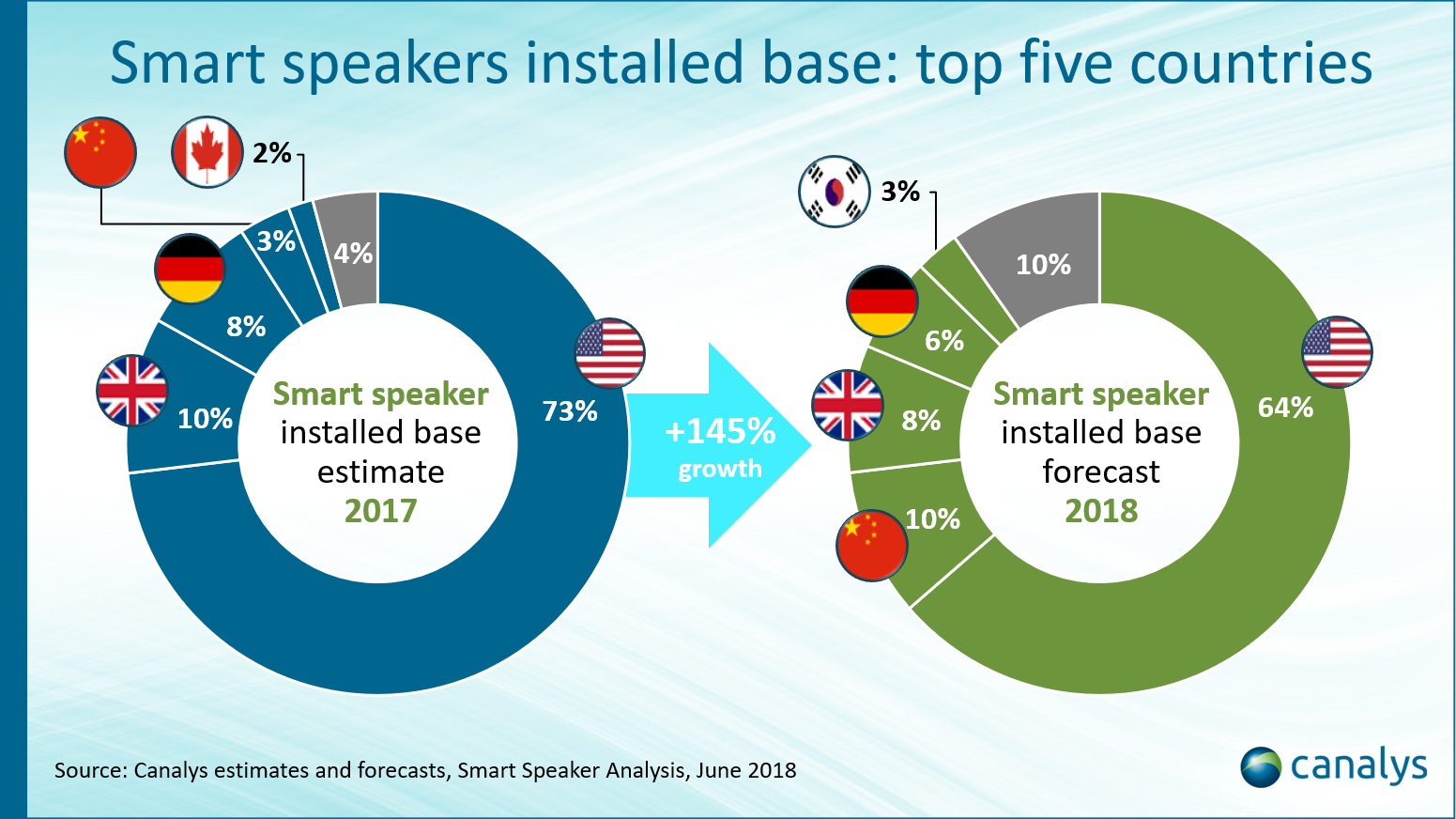
Despite innumerable manufactures, the market for high-end audio is in decline (more hobbyists than buyers?).
I remember the first time I heard a pair of Thiel loudspeakers at the local high-end store.
These loudspeakers, the famous CS3, imaged like the best (british) monitors,
but with higher sensitivity and low-end virtues that I hadn't experienced before.
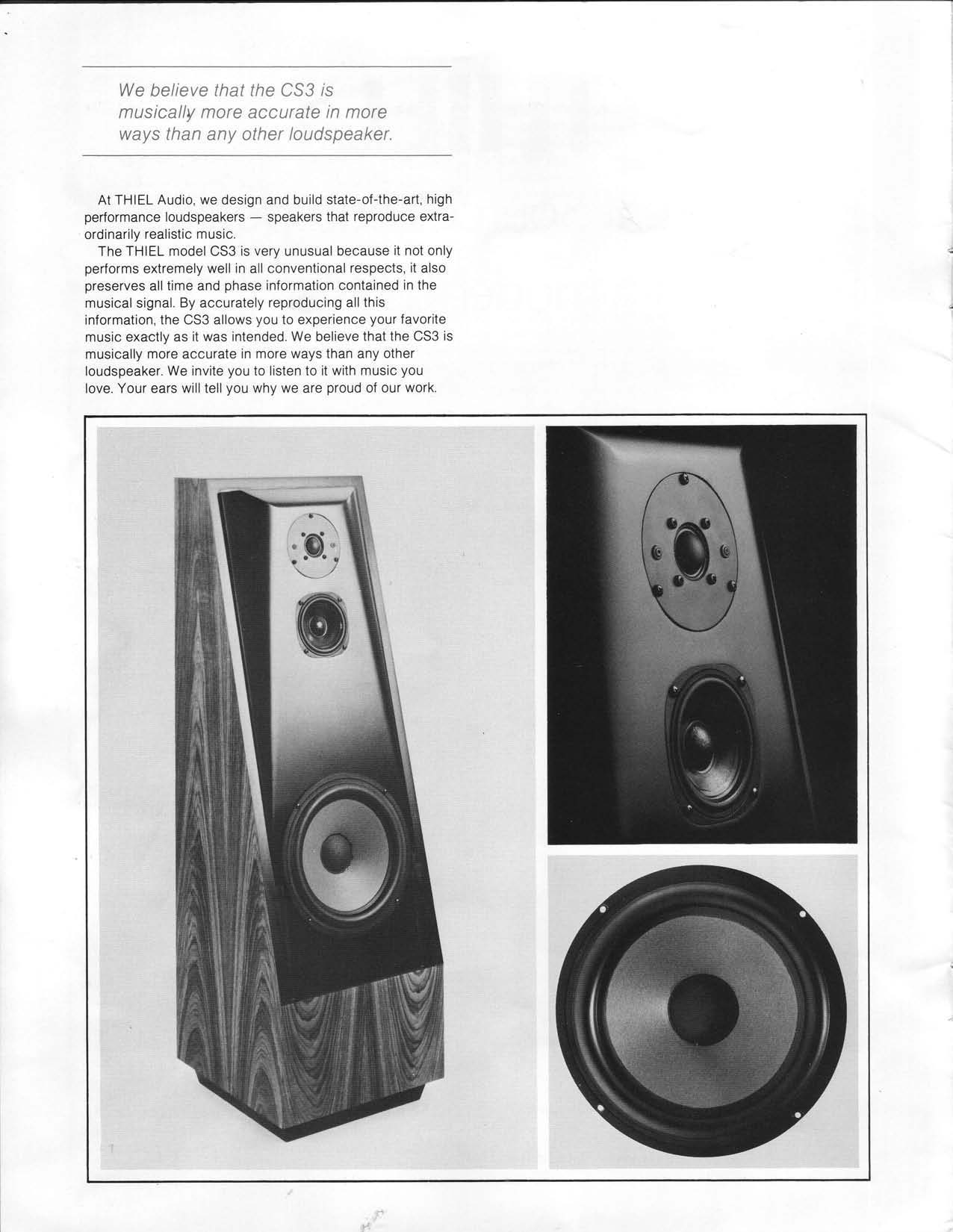
Jim Thiel's engineering philosophy is legendary, specifically his focus on driver efficiency, spacing, linearity,
as well as his crossover topologies (phase issues).
Here's a John Atkinson interview with the maestro.
And an video from CES 2007 in which Jim Thiel elaborates on the CS3.7 and SC4.


Despite innumerable manufactures, the market for high-end audio is in decline (more hobbyists than buyers?).
I remember the first time I heard a pair of Thiel loudspeakers at the local high-end store.
These loudspeakers, the famous CS3, imaged like the best (british) monitors,
but with higher sensitivity and low-end virtues that I hadn't experienced before.

Jim Thiel's engineering philosophy is legendary, specifically his focus on driver efficiency, spacing, linearity,
as well as his crossover topologies (phase issues).
Here's a John Atkinson interview with the maestro.
And an video from CES 2007 in which Jim Thiel elaborates on the CS3.7 and SC4.
Last edited:
- Home
- Loudspeakers
- Multi-Way
- New Celestion "AxiPeriodic Driver"
